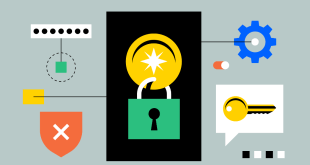Web Application Firewalls (WAFs) have become the frontline defense against cyber threats in the ever-evolving digital landscape. As cyberattacks continue to grow in sophistication, traditional security measures are no longer sufficient to protect sensitive data and valuable assets. This blog delves into the world of Next-Generation WAFs, exploring the latest advancements that are reshaping cybersecurity. Join us as we embark on a journey to uncover the power and potential of these cutting-edge technologies.
Introduction
In today’s interconnected world, web applications play a crucial role in businesses of all sizes. However, they also present an attractive target for malicious actors seeking to exploit vulnerabilities and gain unauthorized access. Web Application Firewalls (WAFs) are the sentinels guarding these applications against a wide array of cyber threats. As technology evolves, so do the strategies and techniques employed by cybercriminals. This calls for a new breed of WAFs that can adapt and combat these ever-changing threats effectively.
Understanding the Evolution of WAFs
Before diving into the Next-Gen WAFs, it’s essential to understand the evolution of this technology. Traditional WAFs initially focused on signature-based detection and rule sets. While they provided some level of protection, they struggled to keep up with emerging threats and offered limited visibility into advanced attack vectors. As cybercriminals became more sophisticated, it became evident that a new approach was needed.
Introducing Next-Generation WAFs
Next-Generation WAFs are the result of a paradigm shift in cybersecurity. They are designed to be smarter, more agile, and capable of providing a comprehensive defense against modern threats. Leveraging advanced technologies like Artificial Intelligence (AI) and Machine Learning (ML), these WAFs can analyze vast amounts of data, learn from patterns, and make real-time decisions to safeguard web applications.
Key Features of Next-Gen WAFs
Behavioral Analysis and Anomaly Detection:
Next-Gen WAFs use behavioral analysis to identify deviations from normal traffic patterns. This approach allows them to detect zero-day attacks and previously unknown threats effectively.
Bot Protection and Management:
Bots can be both good and bad for web applications. Next-Gen WAFs can distinguish between legitimate bots (such as search engine crawlers) and malicious bots (like scrapers and DDoS bots) to mitigate bot-related threats.
API Security:
Application Programming Interfaces (APIs) have become integral to modern web applications. Next-Gen WAFs offer dedicated protection for APIs, ensuring that they are not exploited for unauthorized access or data breaches.
Cloud-Native Support:
As organizations move their applications to the cloud, Next-Gen WAFs seamlessly integrate with cloud infrastructures, providing consistent security across multiple environments.
Real-Time Threat Intelligence:
Next-Gen WAFs leverage threat intelligence feeds to stay up-to-date with the latest attack vectors, enabling them to proactively block emerging threats.
The Power of AI and ML in Next-Gen WAFs
AI and ML are the cornerstones of Next-Gen WAFs, empowering them to analyze vast datasets and make intelligent decisions. By continuously learning from historical data, they can adapt to new attack patterns and identify anomalies in real-time. This dynamic approach significantly enhances their ability to detect and prevent emerging threats.
Case Studies: Next-Gen WAFs in Action
Let’s explore two real-world examples of how Next-Gen WAFs have revolutionized cybersecurity:
Web Application Firewalls Project for a Global E-commerce Giant
Challenge:
A global e-commerce company faced a surge in sophisticated cyberattacks during peak shopping seasons, leading to frequent disruptions and data breaches.
Solution:
Implementing a Next-Gen WAF allowed the company to detect and mitigate attacks proactively. The WAF’s AI-powered bot management effectively distinguished between legitimate and malicious bots, ensuring smooth user experiences.
Results:
The e-commerce giant witnessed a significant reduction in downtime and eliminated data breaches, enhancing customer trust and loyalty.
Next-Gen WAFs Protecting a Healthcare Network
Challenge:
A healthcare network struggled to defend against targeted attacks seeking to exploit vulnerabilities in their web applications and APIs.
Solution:
Deploying a Next-Gen WAF equipped with behavioral analysis and API security capabilities provided comprehensive protection. The WAF’s ML algorithms continuously learned from network traffic, allowing it to block sophisticated threats.
Results:
The healthcare network saw a substantial decrease in successful attacks, safeguarding patient data and maintaining compliance with regulatory requirements.
Commonly Asked Questions about Next-Gen WAFs
Q1: What sets Next-Gen WAFs apart from traditional WAFs?
Next-Gen WAFs leverage AI, ML, and behavioral analysis to adapt to evolving threats, providing more robust and comprehensive protection compared to traditional rule-based WAFs.
Q2: Are Next-Gen WAFs compatible with cloud environments?
Yes, Next-Gen WAFs are designed with cloud-native support, making them highly compatible with cloud infrastructures and multi-cloud deployments.
Q3: Can Next-Gen WAFs defend against zero-day attacks?
Yes, Next-Gen WAFs excel at detecting zero-day attacks through behavioral analysis and anomaly detection, enabling proactive defense against previously unknown threats.
Q4: Do Next-Gen WAFs impact web application performance?
With their AI-driven capabilities, Next-Gen WAFs can optimize and streamline security measures, minimizing performance impact while maintaining robust protection.
Q5: How often are Next-Gen WAFs updated with the latest threat intelligence?
Next-Gen WAFs receive real-time threat intelligence updates to stay ahead of emerging threats, ensuring timely protection for web applications.
Final Words
In the ever-evolving world of cybersecurity, Next-Gen WAFs have emerged as the ultimate safeguard against modern threats. Powered by AI and ML, these advanced technologies redefine the way we protect web applications, providing comprehensive defense against the most sophisticated attacks. As cyber threats continue to evolve, embracing Next-Gen WAFs is essential for organizations seeking to fortify their digital assets and preserve their reputation in the digital realm.
 webfily
webfily



